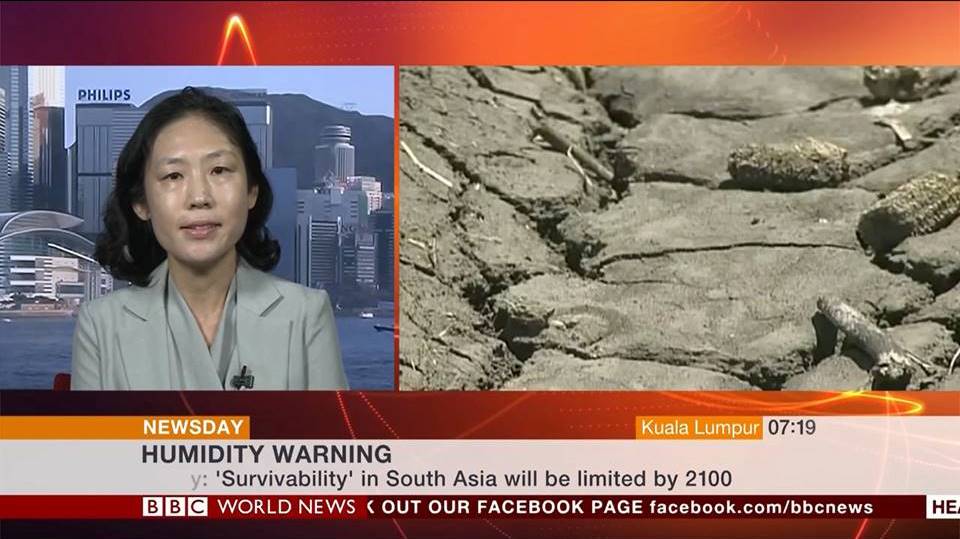





 Former SMART researcher Eun Soon Im shares on BBC World news that 'survivability' in South Asia will be limited by 2100
Former SMART researcher Eun Soon Im shares on BBC World news that 'survivability' in South Asia will be limited by 2100
In South Asia, especially Pakistan, India and Bangladesh, new research suggests that by the end of this century climate change could lead to summer heat waves with levels of heat and humidity that exceed what humans can survive without protection. 'Survivability' in South Asia will be limited by 2100.
The new findings, based on detailed computer simulations using the best available global circulation models, are described this week in the journal Science Advances, in a paper by Elfatih Eltahir, SMART CENSAM Principal Investigator; Eun Soon Im, a former SMART researcher who is now a professor at the Hong Kong University of Science & Technology; and Jeremy Pal, a professor at Loyola Marymount University in Los Angeles.
The study follows an earlier report by Eltahir and his team that looked at projected heat waves in the Persian Gulf region. While the number of extreme-heat days projected for that region was even worse than for South Asia, Eltahir says the impact in the latter area could be vastly more severe. That’s because while the Persian Gulf area has a relatively small, relatively wealthy population and little agricultural land, the areas likely to be hardest hit in northern India, Bangladesh, and southern Pakistan are home to 1.5 billion people. These areas are also among the poorest in the region, with much of the population dependent on subsistence farming that requires long hours of hard labor out in the open and unprotected from the sun.
“That makes them very vulnerable to these climatic changes, assuming no mitigation,” said Eltahir. See more on MIT News.